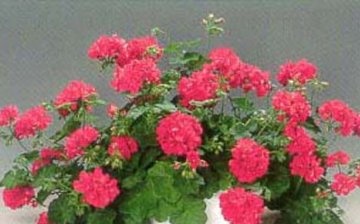Geranium ivy and features of caring for it
Pelargonium (geranium) has a large number of species, forms and varieties. Ivy geranium, also called ivy and thyroid, is well suited for growing in boxes and flowerpots, with which in summer you can decorate a balcony, loggia, garden. This houseplant forms long shoots, on the tops of which white, red or purple flowers flaunt from April to the end of September. There are species with double or semi-double, unusually beautiful inflorescences. The leaves of this geranium are shaped like ivy leaves, for which it got its name.
Like all pelargoniums, ivy geranium is photophilous. It is best to place it on the south or west windowsill. In summer, it needs an air temperature of 20-25 degrees, in winter it must be lowered to 10 -15 degrees. During the growing season, the plant is watered abundantly, in winter it is scarce. Pelargonium can die from waterlogging, so the box or pot in which it lives must have good drainage. It is impossible to spray the plant, moisture on the leaves can provoke a disease.
In the spring-summer period, the plant should be fed with potash fertilizers three times a month. To make the flowering more abundant, the shoots that have faded are immediately removed. Pelargonium needs to be transplanted every two years, using soil with the addition of peat. The ivy geranium is propagated by cuttings, which take root after about 20 days in a moist substrate. After rooting, the cutting is pinched to stimulate the formation of side shoots and transplanted into a separate container. It is better to do this in spring or autumn.




I recently bought a geranium, but out of ignorance I sprayed it. Hope it's okay. In general, I was attracted by the fact that it has bactericidal properties and cleans the air in the apartment.